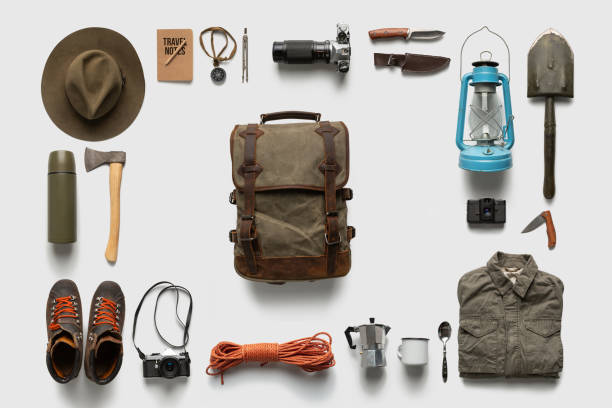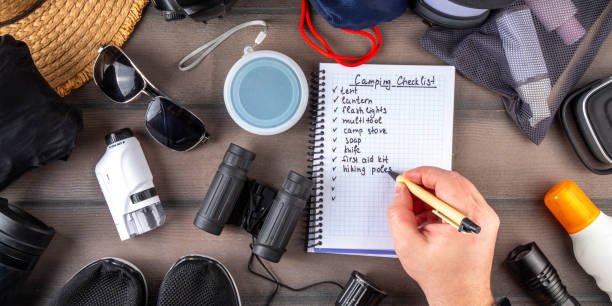Embarking on a solo camping trip is an experience like no other. It presents a unique opportunity to connect with nature, challenge yourself, and discover a newfound sense of freedom and self-reliance. However, proper planning is crucial to ensure a safe, enjoyable, and rewarding adventure.
Choosing the Right Destination
Location
The first step in planning a solo camping trip is selecting the right destination. Consider your interests, skill level, and the type of experience you’re seeking. Are you drawn to remote wilderness areas or prefer established campgrounds with amenities? Do you want to hike through challenging terrain or simply relax near a serene lake? Research different locations, read reviews, and consult guidebooks or online resources to find a spot that aligns with your preferences.
Permits and Regulations
Depending on your chosen destination, you may need to obtain permits or follow specific regulations. National parks, state forests, and other public lands often require camping permits, which can be acquired online or at the park’s entrance. Additionally, familiarize yourself with leave-no-trace principles, fire restrictions, and any other guidelines to ensure you’re camping responsibly and legally.

Gear Essentials
Shelter and Sleeping System
Your shelter and sleeping system are among the most crucial elements of your solo camping trip. Consider the weather conditions and choose a tent or hammock that can withstand the elements. Opt for a lightweight, compact, and easy-to-set-up option. Additionally, invest in a quality sleeping bag and sleeping pad that will keep you warm and comfortable throughout the night.
Cooking and Hydration
Proper nutrition and hydration are vital for any outdoor adventure. Pack a lightweight camping stove, fuel, and lightweight cooking utensils. Choose dehydrated or freeze-dried meals that are easy to prepare and provide the necessary nutrients. Don’t forget a water filtration system or purification tablets to ensure access to clean drinking water.

Navigation and Safety
When camping solo, safety should be a top priority. Pack a topographic map, compass, and GPS device (with extra batteries) to help you navigate the terrain. A first-aid kit, emergency blanket, and a personal locator beacon or satellite communicator can also be lifesavers in case of an emergency.
Mental and Physical Preparation
Solo Camping Skills
If you’re new to solo camping, consider taking a wilderness survival course or practicing your skills in a controlled environment before embarking on a solo trip. Learn how to set up your tent, start a campfire, and navigate using a map and compass. Familiarize yourself with basic first aid and emergency procedures.
Physical Conditioning
Depending on the difficulty level of your chosen destination, you may need to prepare physically. Engage in cardio and strength training exercises to build endurance and stamina. Practice hiking with a fully loaded backpack to prepare for the weight you’ll be carrying on your trip.
Mental Preparedness
Solo camping can be a deeply rewarding but also mentally challenging experience. Prepare yourself mentally by practicing mindfulness techniques, such as meditation or journaling. Learn to embrace solitude and find comfort in your own company. Additionally, research coping strategies for dealing with potential fears or anxieties that may arise during your trip.
Safety Considerations
Leave a Trip Plan
Before embarking on your solo camping trip, leave a detailed trip plan with a trusted friend or family member. Include your planned route, campsites, and expected return date. Provide them with contact information for the relevant authorities in case of an emergency.
Check Weather Forecasts
Closely monitor weather forecasts leading up to your trip and during your adventure. Be prepared to adjust your plans or seek shelter if inclement weather threatens your safety. Pack appropriate clothing and gear for the expected conditions, and always have a backup plan in case of unexpected changes.

Wildlife Awareness
Familiarize yourself with the wildlife in the area you’ll be camping and take necessary precautions. Learn how to store food properly to avoid attracting bears or other animals. Research and follow best practices for encountering potentially dangerous wildlife, such as keeping a safe distance and avoiding confrontations.
Packing Essentials
| Item | Description |
|---|---|
| Backpack | Choose a comfortable, lightweight backpack with a good suspension system. |
| Tent | Select a tent suitable for solo camping and the expected weather conditions. |
| Sleeping Bag and Pad | Invest in a high-quality sleeping bag and insulated pad for warmth and comfort. |
| Camping Stove and Fuel | A lightweight stove and fuel will allow you to cook hot meals. |
| Cooking Utensils | Pack a pot, utensils, and a mess kit for meal preparation. |
| Water Filter/Purifier | Access to clean drinking water is essential for staying hydrated. |
| Navigation Tools | Bring a map, compass, and GPS device for navigation. |
| First Aid Kit | Pack a well-stocked first aid kit for minor injuries and emergencies. |
| Personal Locator Beacon | Consider a personal locator beacon or satellite communicator for emergencies. |
| Headlamp/Flashlight | Essential for navigating and setting up camp in low light conditions. |
| Fire Starter | Waterproof matches or a lighter can help start campfires (where permitted). |
| Multi-tool or Knife | A multi-tool or camping knife can be useful for various tasks. |
| Appropriate Clothing | Pack layers, rain gear, and sturdy hiking boots suitable for the conditions. |
Remember, this is a general list, and your specific packing list may vary based on your destination, duration, and personal preferences.
FREQUENTLY ASKED QUESTIONS About Solo Camping Trip
Is it safe to go solo camping?
Solo camping can be safe if you take the necessary precautions, such as leaving a trip plan, having the proper gear, and being prepared for potential emergencies. However, it’s essential to assess your skill level and choose a destination suitable for your experience.
Do I need a permit to go solo camping?
Many national parks, state forests, and other public lands require camping permits, especially for backcountry or wilderness areas. Check with the relevant authorities for permit requirements in your chosen destination.
What should I do if I encounter wildlife during my solo camping trip?
Remain calm and avoid sudden movements or aggressive behavior. Give the animal plenty of space and slowly back away. Never approach or feed wildlife, and securely store food and scented items to avoid attracting animals to your campsite.
How can I stay entertained during a solo camping trip?
Bring along books, a journal, or small portable games. Embrace the opportunity to disconnect and enjoy the serenity of nature. You can also engage in activities like fishing, birdwatching, or exploring the surrounding area.
How much water should I bring on a solo camping trip?
The amount of water you’ll need depends on the duration of your trip, the weather conditions, and the availability of water sources along your route. As a general rule, plan for at least one gallon (4 liters) of water per person per day for drinking and cooking.
What should I do if I get lost during my solo camping trip?
Remain calm and stop moving. Assess your surroundings and try to retrace your steps. If you have a map and compass or GPS device, use them to try to determine your location. If you’re unable to find your way, stay put and signal for help by building a fire or using a whistle or mirror.
How can I stay warm during a solo camping trip in colder weather?
Dress in layers, including base layers made of moisture-wicking materials, insulating mid-layers, and a waterproof outer layer. Bring a warm sleeping bag rated for the expected temperatures and an insulated sleeping pad to prevent heat loss from the ground. Additionally, stay hydrated and nourished, as proper nutrition and hydration aid in regulating body temperature.
What should I do in case of an emergency during a solo camping trip?
If you have a personal locator beacon or satellite communicator, activate it to signal for emergency assistance. If not, remain in your location and try to signal for help by building a fire or using a whistle or mirror. Seek shelter and prioritize your survival until rescue arrives.
Final Words
Planning a solo camping trip requires careful consideration and preparation, but the rewards are immeasurable. By following the tips and guidelines outlined in this article, you’ll be well-equipped to embark on a safe, enjoyable, and unforgettable adventure. Remember to respect nature, embrace solitude, and challenge yourself while staying within your limits.
Solo camping offers a unique opportunity for self-discovery, personal growth, and a deeper appreciation for the great outdoors. So, pack your gear, plan your route, and get ready to create memories that will last a lifetime.









